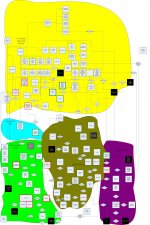G
Guest 85555
Guest
So to kind of place this into my idea of a flowchart.....Twin-Fisted Eagle might be one box and Yellow Mantis/Southern Hill Sect would be another. How do they get from one to the other? What other boxes would be between these two?
Maybe they pursue another ally? Maybe they try to get the Thousand Deaths Flower from Iron Temple? How do they know of these allies or items? How are these introduced into play?
I don't really know what you mean. Twin Fisted eagle sect and Yellow Mantis have objective headquarters in the setting. So they arrive at them by traveling from one to the other (and obviously in a sect war, traveling into enemy territory is potentially dangerous). Maybe I am missing what you mean. But I do think this may be a place where we just don't conceive of play in the same way
Sure, they could try to pursue another ally or obtain the Thousand Deaths flower. It is a big setting. They seek all kinds of things.
There are knowledge skills in the game. So these would be used to determine what they know about sects, or artifacts. They can also seek out people who know these things. Usually this come up because players are looking for possible allies and weapons, but sometimes NPCs who know about specific things could offer the information organically. It very much defends. A lot of times a player might say something like "Do I know of any device rumored to exist that can kill dozens of people at a time" for example. That might lead to a check (or no roll if they have a very high skill rank), and then I would tell them about the Thousands Painful Death Flower. Also a lot of times, by this point in the campaign, the players have amassed knowledge of this stuff already and just say "the thousand painful deaths flower we heard about at the House of Paper Shadows might be useful here" .



